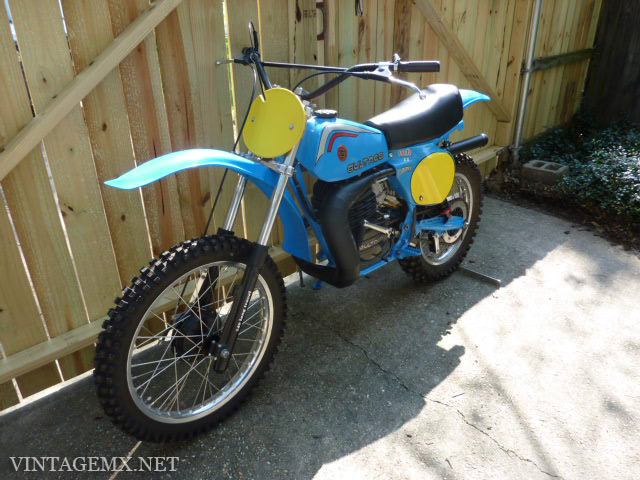

A primary chain ran back to a wet clutch and 5-speed transmission which had been borrowed from the Matador, a model intended for the International Six Days Trial, the tranny of which was a bit beefier than that on the Sherpa. Kickstarter was on the left side, so those right-footers often stood beside the bike to start it. Ignition was by a Femsa magneto on the flywheel, which was used by many European two strokes, including the Spanish compatriots Ossa and Montesa and companies like Maico and Sachs. Also, a bracket ran from the cylinder head, secured by two head-bolts, up to the backbone tube of the frame just to ensure appropriate rigidity. They made sure the engine was properly balanced internally so as not to break the motor mounts, a not-unknown problem in those days.
Bultaco pursang 250 1978 how to#
The slow-turning engine of the British thumper was very useful in putting trials-type power to the rear wheel, until Bulto and his engineers figured out how to do roughly the same with a two-stroke, using heavier flywheels. The Alpina weighed in at a very modest 217 curbside pounds (claimed), as opposed to an equivalent English 250 four-stroke single, which could run almost 300 pounds.
Bultaco pursang 250 1978 full#
This was a steel affair, pretty unbreakable, with a single downtube (in an effort to keep the frame as light as possible) splitting into a full cradle going under the engine. The new model was essentially using the same frame as the Sherpa, with slightly different geometry. To make the Alpina more useful and friendly, the gas tank was enlarged to 2.6 gallons, with a longer saddle and rear footpegs so that a passenger could be carried along. It was reliable, and capable of giving even a novice a pleasurable day of bashing the boonies. The Alpina was advertised as a trials bike, but in truth was more of a trail-riding machine, great for plunking along dirt tracks. The new Sherpa received a major do-over around 1970, and the projected Alpina was intended as the successor to the old Sherpa, being made a bit more manageable and rider friendly. Bulto loved racing, having been a successful competitor in his younger years, and what he liked to do was build a bike that could win races, and then turn out detuned versions for civilian use.īulto was constantly upgrading his machines, making them even more competitive. Over the 25 years of Bultaco’s existence, 1958 to 1983, probably a hundred models appeared, ranging in size from the 50cc Chispa (Spark) to the 370cc Frontera (Frontier). And then the Alpina, honoring Europe’s largest mountain range, and the model we will talk about here. The Sherpa celebrated the conquering of Mount Everest. The Matador was self-explanatory, denoting bull-fighting glory. Then there was the Metralla, or Shrapnel, and the Pursang-Pure Blood. The first Bultaco was the Tralla, or Whip. The bikes were strong, light and dependable, and this was when most of the racing was done by individuals, rather than factory-supported riders. In the 1960s his two-stroke singles took the checkered flag in everything from motocross to trials to roadracing. Señor Bulto had a simple plan when he started up the Bultaco brand in 1958: build great competition motorcycles. In 1974, Bultacos were right-foot shift, making the change to left side in 1975.1976 Bultaco Alpina 250. Thankfully Bultacos had great torque that allowed the rider to rely on brute power to get them out of corners a gear high, thus requiring less shifting.

Bul riders learned to keep pressure on the shifter to ensure the next gear was engaged before getting back into the throttle. The Bultacos had 5-speed transmissions with a huge amount of gearshift throw. Despite the limitations of suspension travel, they managed to be relatively stable for the period. Their ability to either pivot in soft or hard soil in the corners and to rail berms with equal aplomb made them extremely accommodating for a range of riding styles.

Bultacos-or "Buls" as they were affectionately known-had superb handling. They had shapely, extremely thin fiberglass gas tanks that were so thin the head fins stuck out on either side. Bultaco rewarded Pomeroy's continued loyalty to the Spanish brand (despite a flood of offers from other manufacturers) by naming its 1974 Pursang after him.īultacos had a beauty all their own. It was the Spanish Grand Prix, and to cap off the moto win, Pomeroy famously wheelied across the finish line and flashed the peace sign the crowd went nuts. In 1973 Bultaco rider Jim Pomeroy shocked the racing world when he became the first American to win a FIM World Championship Motocross event.


 0 kommentar(er)
0 kommentar(er)
